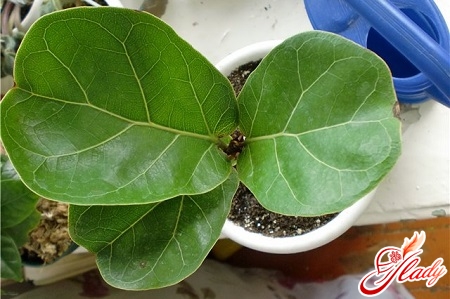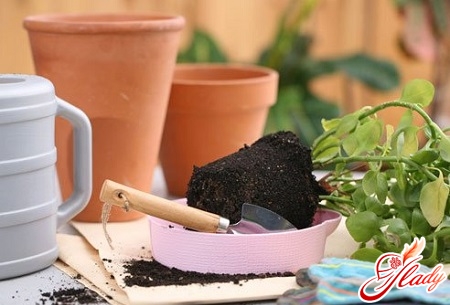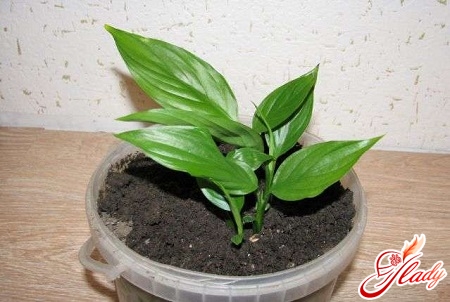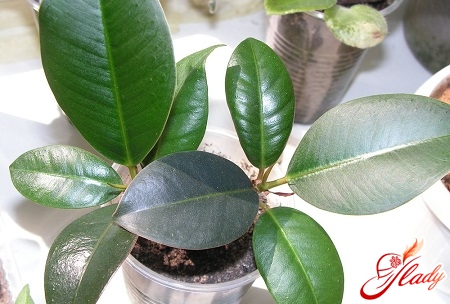 In the wild, ficus trees grow up to thirtymeters in height, but such giants are not suitable for home conditions. Fortunately, these plants can be grown in ordinary flower pots and tubs in a "reduced version". There are one and a half thousand species of ficus, but centuries of decorating houses with the help of plant growing have identified the most promising subspecies of this plant, the care of which does not seem difficult - everyone can master the reproduction of ficus. One of these species is the rubber ficus (lat. Ficus elastica). It was grown back in the mid-19th century, however, for purely utilitarian purposes - for the procurement of rubber. The following forms of ficus are usually grown at home:
In the wild, ficus trees grow up to thirtymeters in height, but such giants are not suitable for home conditions. Fortunately, these plants can be grown in ordinary flower pots and tubs in a "reduced version". There are one and a half thousand species of ficus, but centuries of decorating houses with the help of plant growing have identified the most promising subspecies of this plant, the care of which does not seem difficult - everyone can master the reproduction of ficus. One of these species is the rubber ficus (lat. Ficus elastica). It was grown back in the mid-19th century, however, for purely utilitarian purposes - for the procurement of rubber. The following forms of ficus are usually grown at home:
With proper skill, these ficus trees can be grown using the bonsai technique.
Rules for caring for the ficus
The care of these plants, as well as their propagation, is nottoo complicated. The temperature should not be higher than 23 degrees in summer and not lower than 12 - in winter. The main point to pay attention to: the lighting for the plant should be provided based on the type and color of the foliage. Ficuses with variegated leaves require more light than those with single-colored leaves. But both do not like direct sunlight. Watering these plants should not be abundant, but the soil should be constantly slightly damp. It should be remembered that ficuses can shed leaves both with excess and lack of moisture. In any case, it is necessary to provide good drainage. In addition to watering, it is necessary to spray with water at room temperature, the water should in no case be colder than 15 degrees. Large-leaved ficuses are less sensitive to humidity levels, ficus forms with small leaves require frequent spraying. If the central heating batteries are working in the apartment, you can put a shallow container of water next to the plants. Periodically wipe the leaves with a damp sponge, cleaning them from dust. In nature, the rubber plant grows up to thirty meters in height; to prevent your pet from making such attempts, it must be specially treated. Crown formation is done in the spring, at this time the ficus actively grows and it is easier for it to heal wounds after pruning or pinching. It is necessary to take into account that the rubber plant produces poisonous milky juice, which can cause serious irritation if it gets on the skin. If the height of your plant suits you, you will only need to pinch off the top of the main shoot. If the ficus is too tall, before pinching it, it must be cut 5-7 centimeters above the desired leaf. Please note that pruning the central shoot and pinching it leads to the fact that the ficus will no longer grow in height. The plant must be trimmed with a disinfected knife or pruning shears. You can disinfect the pruning shears and knife with alcohol or heat them over a fire. After pruning, remove the milky juice with a damp cloth; there is no need to treat the cuts in any other way. When you remove the top in the spring, the lateral buds become active and release lateral shoots of approximately the same length and strength, so it is easier to get a “fluffy” plant in the spring, and the crown is formed more evenly. Try not to prune ficuses in the fall and winter; pruning the plant during this period leads to the loss of accumulated nutrients, and can also lead to one-sided crown development. You need to feed the ficus from spring to mid-autumn twice a month, alternating organic and mineral fertilizers. Such care does not cause any difficulties, the main thing is to remember that the soil should be moist before applying fertilizers, and the fertilizer itself should not get on the leaves.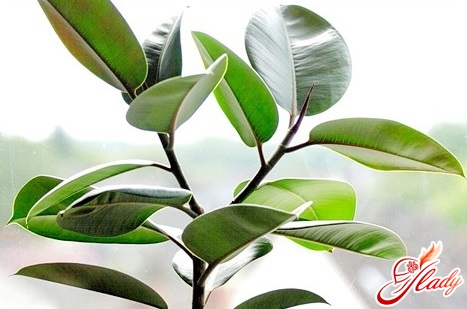
Diseases of ficus
Unfortunately, the rubber plant is not free frompossible diseases and pests. Care during illness should be especially thorough. It is not always possible to immediately find the cause of the disease, but there are several most common situations and recipes for getting rid of them. If your ficus leaves turn yellow and fall off, there may be several reasons for this:
The reason for the leaves of plants falling off can be diseases, the most common are the following:
Ficus diseases occur mainly due toimproper feeding or too cold or abundant watering. If suddenly all the leaves of your ficus have fallen off, do not worry: continue to care for it properly, and it is quite possible that it will grow back.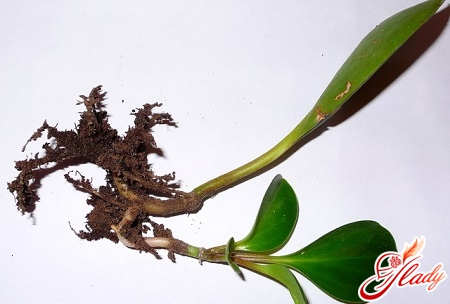
Transplantation and reproduction of ficus
Transplanting a ficus is not a very difficult task.The main thing is to remember that it is done in the spring, and it is desirable that either only replanting or only pruning occurs in one year. It is difficult for plants to adapt to both procedures at the same time and heal the wounds after that. Young plants are replanted by the transshipment method, with minimal impact on the root ball. Adult, large plants that are difficult to replant in a new pot have the top layer of soil changed annually. If for some reason the transshipment method is not suitable (the roots rotted, they had to be treated, having previously removed the substrate), the ficus should be replanted as carefully as possible, not allowing the roots to bend, rooting it at the same height as in the previous pot. Ficus propagation occurs through vegetation. For this you will need:
Ficus propagation occurs as followsway - pour warm water into the washing container, cut the plant, wash the cuttings to remove dirt and milky secretions. Dissolve the rooting stimulator according to the instructions, immerse the cuttings or stem fragments with leaves in it, the solution should contain the cuts, but not the leaves themselves. Leave them there for a day, the room temperature should not be below twenty and above thirty-five degrees Celsius. After a day, remove the cuttings and place them in disposable cups filled with water, leave them there until roots form. In this case, the temperature should also not fall below twenty degrees Celsius, because this will reduce all reproduction to nothing. As needed, add water to the cups. If you have done everything according to the instructions, after one to three weeks you will have sprouts suitable for planting, which need to be planted in a soil mixture (equal parts of leaf and turf soil and sand), after which you need to provide them with care, like adult ficuses. The first time you need to feed the young plants two weeks after planting, the second time - after they start growing. Do not forget to transfer them to larger containers over time as the ficuses grow. As you can see, propagation is not such a complicated process as it might seem to an inexperienced gardener. And in general, caring for ficuses is not so difficult, the main thing is to do it regularly, following all our recommendations.




